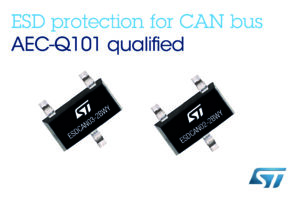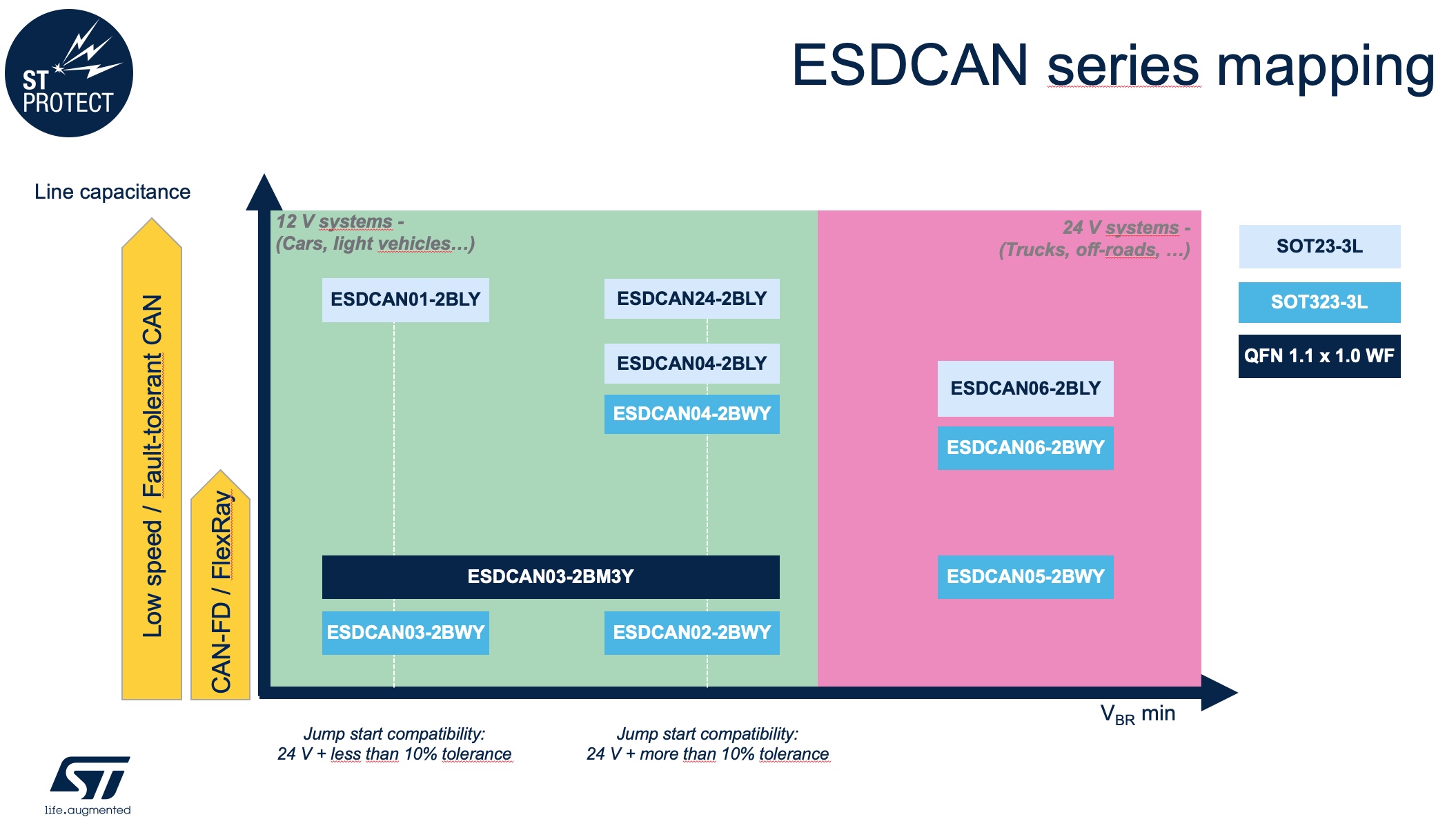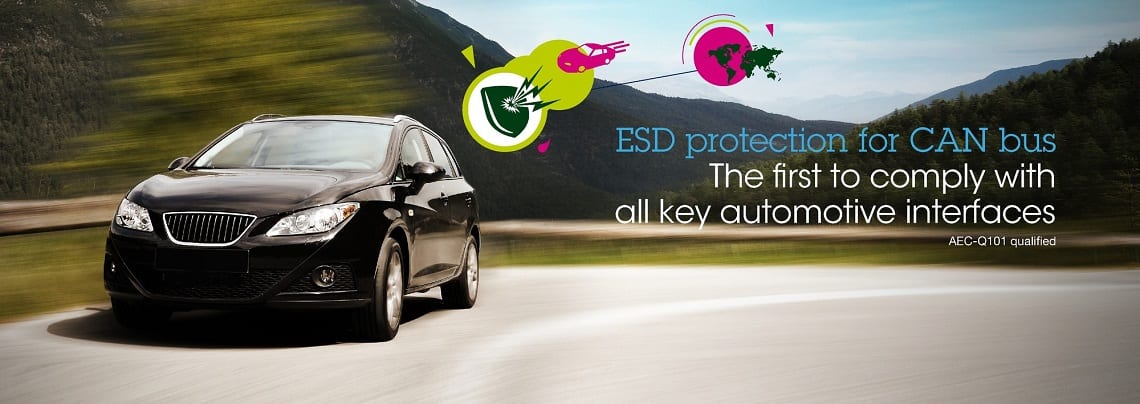Electronic equipment – and the value of semiconductors — in cars is constantly growing. Modern cars, from luxury models to even entry-level vehicles, contain lots of electronic modules providing comfort, infotainment, and safety for occupants. These modules increasingly interact with each other turning cars into mobile networks.
Several different networking standards (CAN, LIN, MOST, FlexRay, Ethernet 2 wires, and others) connect the various modules and support data exchange. With this connectivity, however, comes the risk of increased damage from electrical effects such as electrostatic discharges (ESD) and electromagnetic interference (EMI). These can disrupt or damage sensitive electronic modules. The good news is that protection devices support safe and reliable functionality.
Types of Automotive Electrical Hazards
Electrical hazards can be ‘conducted’ hazards and ‘radiated hazards.
Conducted hazards appear directly in the cable harness and are generated by inductive loads, such as those produced by alternators.
In contrast, radiated hazards result from high current-switching applications like relay contacts, high-current switches (transistors) and ignition systems. All electronic modules near the source of the electromagnetic radiation are indirectly effected by these radiated effects.
Whether conducted or radiated, both types of hazards can impact electronics in two ways – on the data lines or on the supply rails, depending on the environment.
Data-line protection requires protecting data buses, sensor data lines and others against low energy but very high dv/dt transients – mainly ESD surges – that can generate a very strong electromagnetic field. Data-line surges are divided into air discharges (+/-25 kV [ISO10605], +/-15 kV [IEC61000-4-2]) and contact discharges (+/-8 kV [ISO10605/IEC61000-4-2]).
On the other hand, power-line protection guards against transients generated on the supply rail, for example during load dump or over-voltage conditions, with sudden current interruption through an inductive load or the inductance of a parasitic wiring harness that generates high energetic transients from low level / high energy to high level / low energy, sometimes with a high dv/dt. Protection from these transients is covered by ISO 7637-2, IEC61000-4-2, and ISO10605 standards.
Standards for the protection of automotive electronics
All the hazards above are described and covered by standards from organizations like the Automotive Electronics Council (AEC) and the International Standards Organization (ISO).
The “Test methods for electrical disturbances from electrostatic discharge” for road vehicles (ISO 10605) and “Electrical disturbances from conduction and coupling” for road vehicles (ISO 7637) are the most important automotive standards regarding electrical hazards.
Let’s focus, for now, on ESD protection and especially on protecting CAN (Controller Area Network), because it is a very common network in cars. CAN is used in key sockets like camera, radar, infotainment, airbag, steering or passive entry applications. To protect CAN transceivers, you need dual-line (CAN high and low), bidirectional, 24V-minimum voltage-protection devices that are able to protect against jump-start stress. But this is just the entry point for selecting a device. Other important parameters valuable in making the right component selection include Stand-of-voltage (VRM) which is the voltage that the device can withstand in normal operation (24V) with low leakage current. Clamping voltage (VCL) indicates the maximum amount of voltage that a surge protector will allow through itself during power-surge suppression. When the device reaches its clamping voltage, it limits any further current from flowing through the device. Breakdown voltage (VBR) is the voltage at which the device goes into avalanche breakdown measured at IR (shown in the data sheet:
Additional Parameters to check are:
- Dual-line ESD and EOS protection (Electrical Over-Stress)
- 175°C for ESDCAN
- Package size (QFN 1.1 x 1.1 is the smallest package proposed for CAN protection)

For example, here’s the datasheet of ST’s ESDCAN0x-2BWY. This device is compliant with all key interfaces in automotive applications, including CAN-FD (Flexible Data Rate). It complies with the standards ISO10605/IEC61000-4-2: >25kV air/contact as well as ISO7637-3a/3b and is AEC-Q101 qualified.
ST provides a product family that is dedicated to CAN protection in 12V and 24V systems. Low line capacitance is very important as CAN interfaces tolerate only a little additional capacitance on the line. ESDCAN devices’ line capacitance scale from 30pF down to 3pF. The protection devices are available in SOT23, SOT323 and QFN 1.1 x 1.1 packages.

Design and evaluation support is provided with datasheets, application notes and an evaluation board for automotive-grade ESD protection (STEVAL-OET003V1).
The ST Protection Finder app (App Store, Google Play) can easily help you get the right TVS at a touch from ST, the leading supplier for automotive and industrial protection devices.




